- Home
- Shelby Foote
The Civil War: A Narrative: Volume 2: Fredericksburg to Meridian Page 27
The Civil War: A Narrative: Volume 2: Fredericksburg to Meridian Read online
Page 27
That was that; Bragg remained at his post by default, so to speak. Meanwhile—principally by courtesy of Rosecrans, who, though the methods employed to avoid compliance were quite different in each case, would no more be budged by his superiors than Johnston would be influenced by his—the Army of Tennessee enjoyed, throughout the opening half of the year, the longest period of inaction afforded any considerable body of Confederates in the whole course of the war. Polk’s corps was on the left at Shelbyville, Hardee’s on the right at Wartrace, with cavalry extending the long defensive line westward to Columbia and eastward to McMinnville, seventy air-line miles apart. Breastworks protected by abatis were thrown up along the critical center, and behind them, once the countryside emerged from the quagmires created by the late winter and early spring rains—which had afforded one self-styled etymologist the opportunity to remark that the name of the little railroad town where Bragg had his headquarters was derived from the conjunction of two Greek words: tulla, meaning “mud,” and homa, meaning “more mud”—the infantry enjoyed the foison of the lush Duck River Valley and indulged in such diversions as attending church services and revival meetings (Bragg set an example here by allowing himself to be baptized in an impressive ceremony) or chuck-a-luck games and cockfights, depending on individual inclinations. The army’s effective strength had risen by now to almost 50,000 of all arms, including better than 15,000 cavalry, who passed the time in a quite different manner by probing at Rosecrans’ flanks and rear and harassing his front.
Joe Wheeler got things off to a rousing start on January 13 with a strike at Harpeth Shoals, midway between Nashville and Clarksville, where he captured or sank four loaded packets and one lightly armored gunboat, taking them under fire from the bank, and thus effectively suspended the flow of goods up the Cumberland River, the main Federal supply line. But this accomplishment was more than offset, another fifty miles downstream, by the repulse he suffered on February 3 when he launched an ill-conceived and poorly co-ordinated assault on an outnumbered but stout blue garrison at Dover, two weeks short of the anniversary of the fall of adjacent Fort Donelson to Grant. Bedford Forrest, who had not only lost some of his best men but had also had two fine horses shot from under him in the course of attacks which he had advised against making in the first place, was so incensed by Wheeler’s handling of the affair that he bluntly told the young commander that he would resign from the army before he would fight again under his direction. The discouraged graybacks limped back to Columbia, the western tip of Bragg’s long crescent. Meanwhile, far out the opposite horn, Morgan was doing no better, if indeed as well. With two of his regiments detached to stir up excitement in Kentucky, he too suffered a bloody repulse at the hands of an inferior force on March 20 at Milton, fifteen miles northeast of Murfreesboro, and still another, two weeks later, at nearby Liberty, which resulted in his being driven in some confusion back on his base at McMinnville. Perhaps the best that could be said for all these various affairs, at any rate from the Confederate point of view, was that they all occurred within the Union lines and therefore served, victories and defeats alike, to keep Rosecrans off balance by increasing his native caution and apprehensiveness. “Their numerous cavalry goads and worries me,” he had informed Washington at the outset, “but I will try to be equal to them.”
This was going to be more difficult than he knew. Even as he wrote, Earl Van Dorn, the South’s ranking major general—ordered north by Johnston over Pemberton’s frantic protest at thus being practically stripped of cavalry despite the skill he recently had shown in handling that arm—was on the way from Mississippi with two divisions of horsemen, all thirsty for more of the glory they lately had tasted when they threw a whole Yankee army into retreat from Holly Springs. In this respect, their leader was the thirstiest man among them. After the Transmississippi disasters and the Corinth fiasco, which had resulted, amid wholesale condemnation, in his being superseded as commander of his home state forces, his bad luck had suddenly turned good, and he was eager to take further advantage of the switch. Presently, soon after his arrival on February 22 at Columbia, where he assumed responsibility for protecting the left horn of Bragg’s crescent while Wheeler protected the right, Rosecrans gave the diminutive Mississippian just the chance he had been seeking ever since his return to his first love, cavalry. The Federal plan was for a convergence of two infantry columns, one out of Murfreesboro under Phil Sheridan, the other out of Franklin, directly south of Nashville, under Colonel John Coburn; they would unite at Spring Hill, a dozen miles north of Columbia, then move together against that place, foraging as they went. Coburn set out on March 4, with just under 3000 of all arms. Van Dorn was waiting for him next morning at Thompson’s Station, just above the intended point of convergence, with twice as many men—including Forrest, who had been transferred in consideration of his vow to serve no more under Wheeler. The result was a sudden and stunning victory, cinched by Forrest, who came in on the flank and rear while Van Dorn maintained pressure against the front, and a bag of 1221 prisoners, including Coburn, whose artillery and cavalry, along with one of his infantry regiments assigned to guard the forage train, had fled at the first detection of the odds. His thirst unslaked, Van Dorn sent his captives south and turned east to tackle Sheridan, intending thus to sweep the board of all available opponents, but found that the other column had taken warning from the boom of guns and pulled back out of danger.
Rosecrans too had taken alarm, and though his present-for-duty strength now stood at 80,124, as compared to Bragg’s 49,068, he began to suspect that he was outnumbered. “I am not, as you know, an alarmist,” he wired Halleck on the day after Coburn’s defeat, “but I do not think it will do to risk as we did before.” He reinforced the threatened quarter, causing the rebel horsemen to pull back. But when the blue tide once more receded, Van Dorn returned again, cutting and slashing, left and right, and playing all the while on Rosecrans’ fears. On March 24, having leapfrogged his headquarters to Spring Hill, he sent Forrest against Brentwood (ten miles north of Federal-held Franklin) where a garrison of about 800 Wisconsin and Michigan infantry protected army stores and a stockaded railroad bridge across the Little Harpeth River. Forrest appeared before the place next morning, demanding an unconditional surrender. “Come and take us,” Colonel Edward Bloodgood replied stoutly, until he saw the graybacks preparing to do just that: whereupon he changed his mind and hauled down his flag. Setting fire to the stockade and packing the stores for removal along with his captives, Forrest sent one regiment up the Nashville pike to spread the scare in that direction—which it did, penetrating the southern environs of the city and riding within plain sight of the capitol tower—while the main body, after pausing to fight a confused rear-guard action provoked by a blue column that moved up from Franklin, made its getaway eastward before turning south to safety. In a general order issued on the last day of the month, Bragg expressed the “pride and gratification” he felt as a result of the “two brilliant and successful affairs recently achieved by the forces of the cavalry of Major General Van Dorn.”
Unwilling to rest on his laurels now that fortune’s smile was broadening still further, Van Dorn moved on April 10 against Franklin itself. A forced reconnaissance, he called it afterwards, though the defenders insisted that it had been an all-out attempt to take the place by storm. In support of the former contention was the fact that casualties were fewer than a. hundred on each side; anyhow, he disengaged and withdrew when he found that the Union commander, Major General Gordon Granger, had been reinforced to a strength of about 8000. Back at Spring Hill, he continued to design projects for the discomfiture of the enemy, assisting Bragg to hold onto the fruitful region despite the odds which favored a Federal advance. On through April he labored, and into May, though apparently not so exclusively as to require him to abandon other pursuits; for at 10 o’clock on the morning of May 7, Dr George B. Peters, a local citizen, walked into headquarters, where Van Dorn was hard at work at his desk, and shot him
in the back of the head with a pistol. He died about 2 o’clock that afternoon, by which time the assassin was safe within the Union lines, having ridden off in the buggy he had left parked outside while he stepped indoors to carry out his project. The accepted explanation was that the doctor had chosen this emphatic means to protest the general’s attention to his young wife, though there were some who claimed that he had done the shooting for political reasons. At any rate, that was the end of the saga of Buck Van Dorn. Fortune’s smile had turned out fickle after all, and they buried him in Columbia next day.
Wheeler had got back in stride by then with a double blow at Rosecrans’ rail supply lines on April 10, the day Van Dorn tested the Franklin defenses and found them strong. The first was scored northeast of Nashville, beyond Andrew Jackson’s Hermitage, by secretly posting guns along the near bank of a bend that took the Cumberland River within 500-yard range of the Louisville & Nashville tracks. After a wait of two hours, Wheeler reported, “a very large locomotive came in view, drawing eighteen cars loaded with horses and other stock.” Though the target was moving his marksmanship was excellent, according to a Federal brigadier. “The first shot knocked off the dome of the locomotive, the next went through the boiler, one shot broke out a spoke in one of the driving-wheels.” When the engine stalled in a cloud of steam, the gunners continued to pump shells into the cars, scattering bluecoats, horses, and cattle in all directions. Meanwhile, on the Nashville & Chattanooga side of the Tennessee capital, another group of Wheeler’s men rode into Antioch, where they ambushed and derailed a train by spreading the tracks and took from the wreckage about seventy Union captives—including twenty officers, three of whom were members of Rosecrans’ staff—along with some forty Confederates en route to Ohio prison camps, $30,000 in greenbacks, and a large mail containing much useful information. Loaded with booty, the raiders got away eastward to join their friends, who by now had ridden back past the Hermitage after their shooting-gallery fun on the Cumberland. Wheeler’s total cost for both accomplishments was one man wounded.
He was cheered all round and greeted with smiles on his return, for both actions had a somewhat comic tinge. But the loudest cheers and the broadest smiles were reserved for Bedford Forrest, who began to win his nom de guerre “the Wizard of the Saddle” with an exploit which took him, through the closing days of April and the opening days of May, into parts of three states and across the northern width of Alabama. He was drawn in that direction by a Federal project which got under way, by coincidence on that same April 10, with the embarkation at Nashville of an expedition designed to sever Bragg’s main supply line, the Western & Atlantic Railroad, between Atlanta and Chattanooga. This had been attempted once before, a year ago this week, but had resulted in the Great Locomotive Chase and the capture of the twenty-two spies who tried it. The new plan, while perhaps equally daring, was of a quite different nature. Taking a page from the book the rebel cavalry fought by—particularly John Morgan and Forrest himself—Colonel Abel D. Streight, New-York-born commander of a regiment of Hoosier infantry, proposed to Rosecrans that a large body of men, say 2000, be mounted for a quick but powerful thrust, into and out of the South’s vitals. Rosecrans, who so often had been on the receiving end of this kind of thing, was delighted at the prospect of turning the tables, and his delight increased when Streight removed his final objection by agreeing to mount the men on mules instead of horses, of which there was a shortage; mules, he said, were not only more sure-footed, they were also more intelligent. (Which was true, so far as it went, though that was by no means all of the story. Mules had other, less admirable qualities: as he would presently discover.) At any rate, Rosecrans gave his approval to the project, designated Streight as commander, and assigned him three more regiments of Ohio, Indiana, and Illinois infantry, together with two companies of North Alabama Unionists—a breed of men who were known to their late compatriots as “homemade Yankees,” but who were expected to prove invaluable as guides through a region unfamiliar to everyone else in the flying column—and a requisition for some nine hundred quartermaster mules. This would mount only about half of the troops, but Rosecrans explained that the rest could secure animals by commandeering them from rebel sympathizers while on the way to their starting point in the northeast corner of Mississippi.
So Streight got his men and mules aboard the transports and steamed next morning down the Cumberland to unload at Palmyra, on the left bank just around the bend from Clarksville, for a stock-gathering march to Fort Henry, where they again met the transports for the long ride south up the Tennessee to Eastport, Mississippi. That was the true starting point, tactically speaking, but Streight—a broad-chested man of soldierly appearance, just past forty, with a tall forehead, light-colored eyes, a fleshy, powerful-looking nose, and a dark, well-trimmed beard framing a wide, determined mouth exposed below a clean-shaven upper lip—had already encountered complications well outside the original margin he had allowed for error. For one thing, after waiting to pick up rations and forage on the Ohio, the navy did not turn up at Fort Henry on time, with the result that he did not reach Eastport until April 19, three days behind schedule. For another, a delayed check disclosed that a large proportion of the quartermaster mules were sadly afflicted with distemper, while many others were unbroken colts, not over two years old. This last exposed a further drawback; for he found that his converted infantrymen, as one of them remarked, “were at first very easily dismounted, frequently in a most undignified and unceremonious manner.” Practice might improve the men’s equestrian skill, but the mules were going to remain a problem. About five hundred had been commandeered on the course of the overland march, which more than made up for the hundred-odd who died of sickness and exhaustion while en route; but this gain was canceled on the evening of his arrival at Eastport. Returning to headquarters about midnight from a conference with Brigadier General Grenville M. Dodge, who had brought a 7500-man column over from Corinth to serve as a screen for the raiders’ departure, he learned that some four hundred of the creatures—naturally the most intelligent of the lot—had escaped from their crudely built corrals and now were scattered about the countryside, disrupting the stillness of the night and mocking his woes with brays that had the sound of fiendish laughter. Two more days were spent here in rounding them up; half of them, that is, for the rest were never recovered. However, Dodge made up the difference with animals out of his pack train, and Streight at last got started in earnest, moving eastward across Bear Creek on the morning of April 22.
Five days behind schedule, but still protected from inquisitive eyes by the screen Dodge’s troops had drawn along the south bank of the Tennessee River, he reached Tuscumbia late on the 24th and called a final two-day rest halt before resuming the march at 11 p.m. of the 26th, his force reduced to 1500 by a rigid inspection in which the surgeons culled such men as they judged unfit for the rigorous work ahead. All next day, and the next, as the column moved south to Russellville, then eastward to Mount Hope, rain and mud held its progress to a crawl and 300 of the fledgling troopers were reconverted to infantry because their mounts were too weak to carry anything heavier than a saddle. On the 29th, however, the sun broke through, giving “strong hopes of better times,” as Streight declared in his last rearward message, and he began to pick up speed, along with replacements for his ailing mules. Thirty-five miles he made that day, clearing Moulton to make camp that night at the western foot of Day’s Gap, a narrow defile piercing a lofty ridge that signaled the advent of the Appalachians. At this point, with the tactically dangerous flatlands left behind, he was about halfway to his first objective: Rome, Georgia, where the Confederacy had a cannon foundry and machine shops for the Western & Atlantic, whose main line was barely a half-day’s ride beyond. Starting early next morning, the last day of April, Streight rode at the head of the column toiling upward through the gap. “The sun shone out bright and beautiful as spring day’s sun ever beamed,” his adjutant later recalled, “and from the smouldering c
ampfires of the previous night the mild blue smoke ascended in graceful curves and mingled with the gray mist slumbering on the mountain tops above.” There was in fact much that was dreamlike and idyllic about the scene—“well calculated to inspire and refresh the minds of our weary soldiers,” the admiring lieutenant phrased it—until suddenly, without previous intimation of a transition, as Streight and the forward elements of the column neared the crest, the dream shifted kaleidoscopically into nightmare. From downhill, in the direction of last night’s camp, the deep-voiced booms of guns, mixed in with the tearing rattle of musketry, abruptly informed him that he was under attack.

 Chickamauga and Other Civil War Stories
Chickamauga and Other Civil War Stories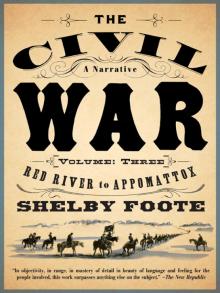 The Civil War: A Narrative: Volume 3: Red River to Appomattox
The Civil War: A Narrative: Volume 3: Red River to Appomattox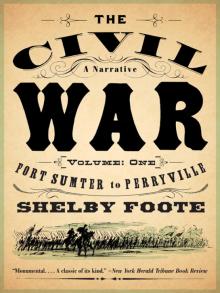 The Civil War: A Narrative: Volume 1: Fort Sumter to Perryville
The Civil War: A Narrative: Volume 1: Fort Sumter to Perryville Jordan County
Jordan County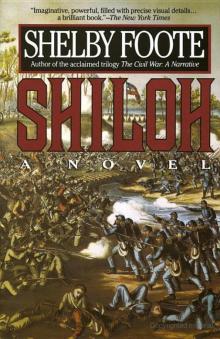 Shiloh
Shiloh Love in a Dry Season
Love in a Dry Season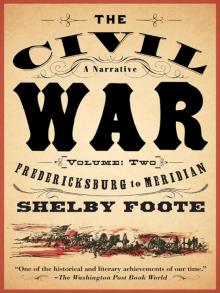 The Civil War: A Narrative: Volume 2: Fredericksburg to Meridian
The Civil War: A Narrative: Volume 2: Fredericksburg to Meridian Chickamauga
Chickamauga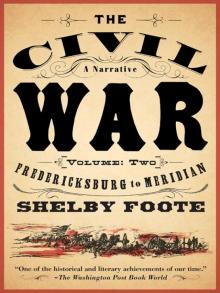 The Civil War: A Narrative: Fredericksburg to Meridian
The Civil War: A Narrative: Fredericksburg to Meridian